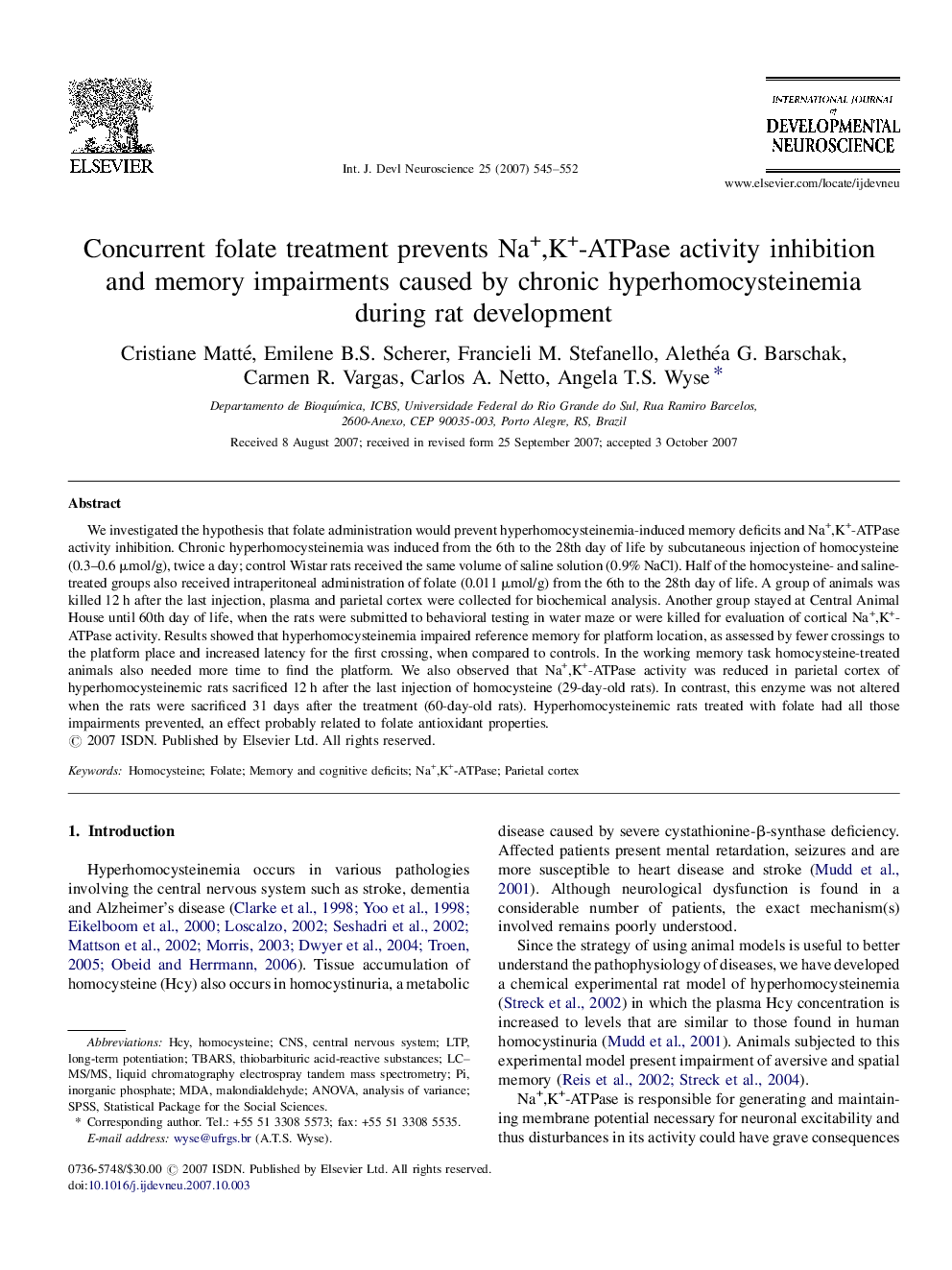| Article ID | Journal | Published Year | Pages | File Type |
|---|---|---|---|---|
| 2787109 | International Journal of Developmental Neuroscience | 2007 | 8 Pages |
We investigated the hypothesis that folate administration would prevent hyperhomocysteinemia-induced memory deficits and Na+,K+-ATPase activity inhibition. Chronic hyperhomocysteinemia was induced from the 6th to the 28th day of life by subcutaneous injection of homocysteine (0.3–0.6 μmol/g), twice a day; control Wistar rats received the same volume of saline solution (0.9% NaCl). Half of the homocysteine- and saline-treated groups also received intraperitoneal administration of folate (0.011 μmol/g) from the 6th to the 28th day of life. A group of animals was killed 12 h after the last injection, plasma and parietal cortex were collected for biochemical analysis. Another group stayed at Central Animal House until 60th day of life, when the rats were submitted to behavioral testing in water maze or were killed for evaluation of cortical Na+,K+-ATPase activity. Results showed that hyperhomocysteinemia impaired reference memory for platform location, as assessed by fewer crossings to the platform place and increased latency for the first crossing, when compared to controls. In the working memory task homocysteine-treated animals also needed more time to find the platform. We also observed that Na+,K+-ATPase activity was reduced in parietal cortex of hyperhomocysteinemic rats sacrificed 12 h after the last injection of homocysteine (29-day-old rats). In contrast, this enzyme was not altered when the rats were sacrificed 31 days after the treatment (60-day-old rats). Hyperhomocysteinemic rats treated with folate had all those impairments prevented, an effect probably related to folate antioxidant properties.
